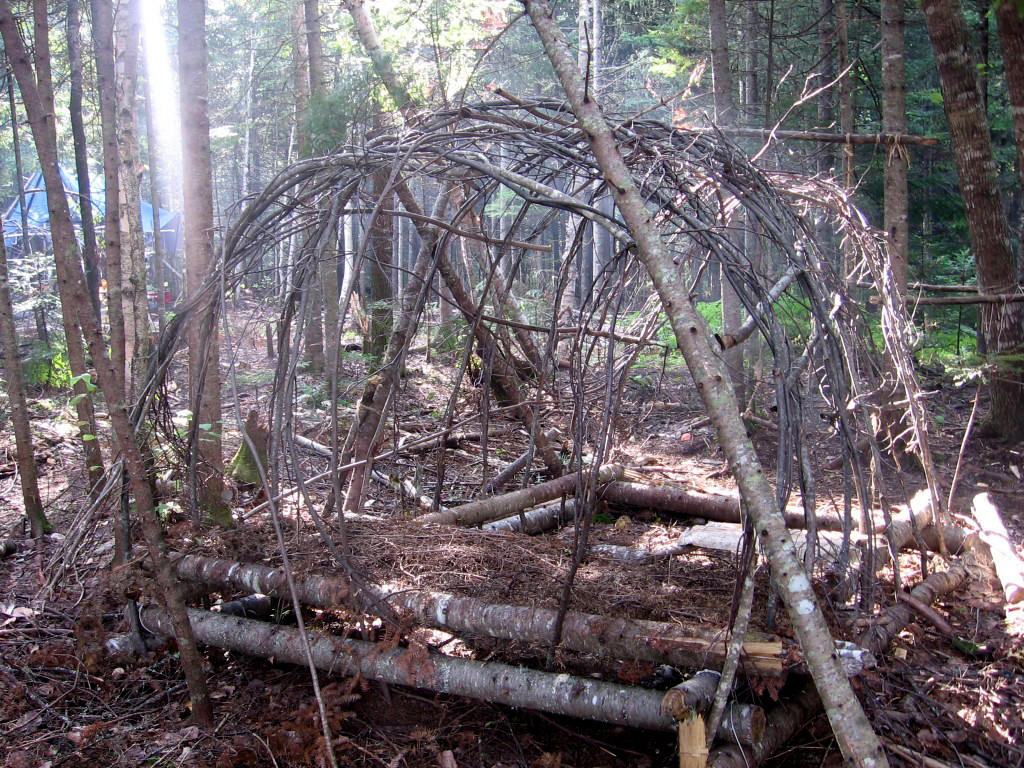By Sean Fagan

Whatever type of shelter you sleep in, it's important to make your shelter and camp-site as safe as possible. Above - the dilapidated remains of a large, one-man, dome shelter (Photo: Sean Fagan - Maine, USA).
.
.
Trip hazards are best avoided in a campsite, especially near a camp-fire or vulnerable camping gear (such as a tent).
By de-barking the tops of my wooden tent pegs they are more visible against the dull, woodland floor during the day and night.
Also, being more aware of the presence of tent pegs can make an individual more aware of the guy lines attached to the pegs – another potential trip hazard.
Incidentally, if you find that a de-barked wooden peg is blending in with the surrounding dead leaves of the woodland floor, then clear away the leaves from around the peg to expose the darker, woodland soil.
This will provide a greater, visible contrast between the pale wooden peg and the dark soil.
.
Fear not but respect Nature
.
Making a campsite as safe as possible (especially in a remote area) can go a long way in enjoying the outdoors.
I love it when people get out there and enjoy wild places - as long as they are safety-conscious, and preferably well-versed and trained in outdoor/wilderness first aid (preferably specific to the region they are camping in - camping in a desert carries different outdoor risks than camping, say, in a rain-forest).
.
A simple incident such as tripping over a tent peg in a wild, remote area can precipitate a cascade of medical issues to manifest out of nowhere.
Concussion, scalding, cuts, shock, fainting, an eye injury or a sprained ankle or wrist, are some of the worst case scenarios that can occur from falling onto a woodland floor.
Am I being a tad melodramatic?
I doubt it very much. I've witnessed people hurting themselves in the most mundane of outdoor settings.
But it's not the aim of this article to encourage a fretful, fear-based attitude to the wild.
Making your campsite as risk-free as reasonably possible makes good sense - especially considering that many outdoor enthusiasts spend a lot of time in close proximity to their campsite.
Personally, I really like the feeling of being able to wander freely around my campsite, day or night, with little fear of causing myself an injury.
Whether that's clearing away some thorny foliage around my camp or making a sturdy, safe pot suspension system or just making my tent pegs more visible - it's all part of making my campsite as safe, comfortable and convenient as possible.
It's about making the campsite feel like home.
As always, have safe and grand adventures - and look after the large as well as the small details of your outdoor excursions - small details such as potential trip hazards like wooden pegs.
.
.
"Risk perception is a muscle that needs to be flexed and improved".
Kate Blincoe
.
.
Related articles on this website:.
*Check us out on Instagram, Twitter & Facebook for more outdoor-related topics.
Recent Comments